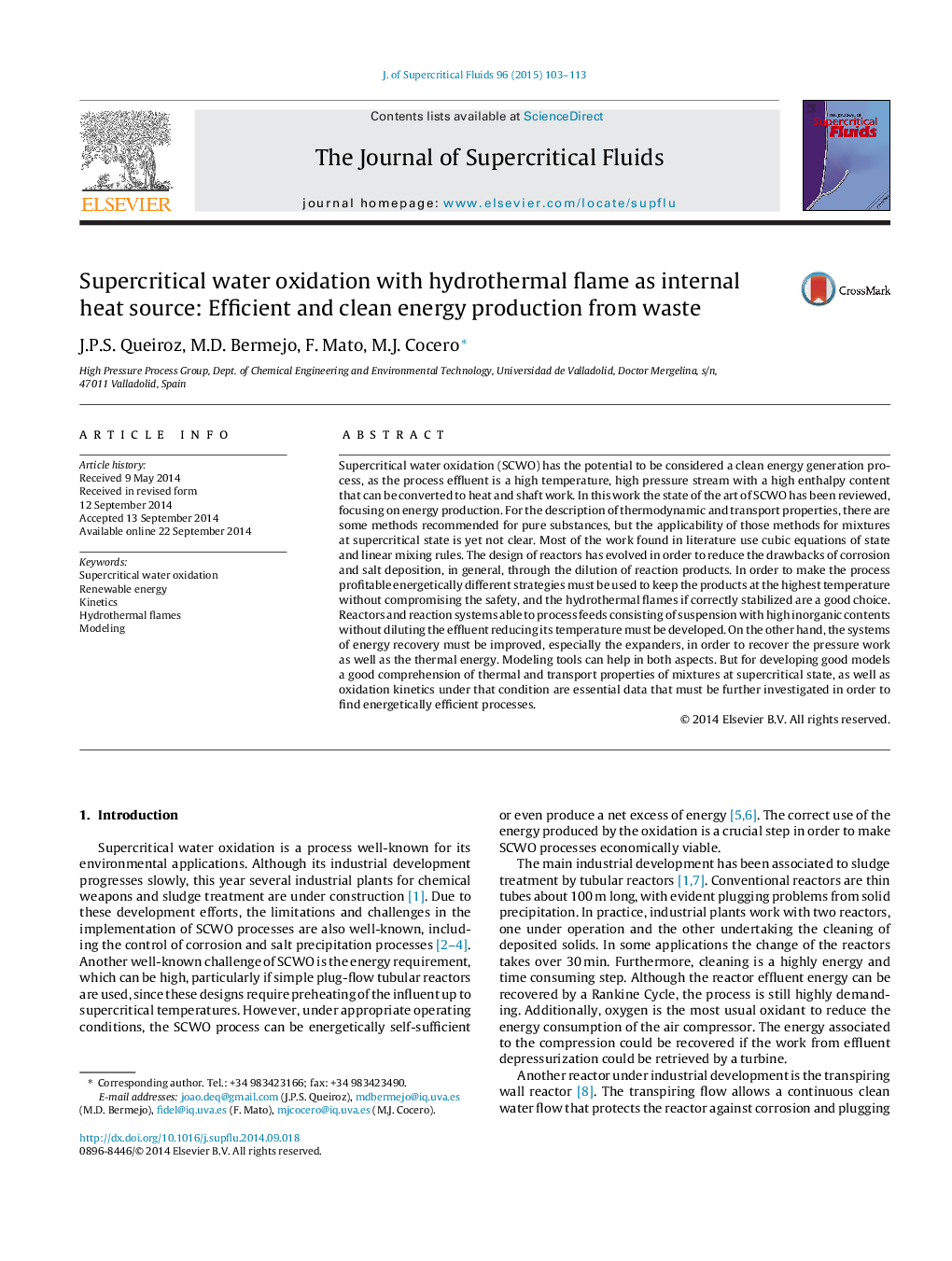| Article ID | Journal | Published Year | Pages | File Type |
|---|---|---|---|---|
| 230446 | The Journal of Supercritical Fluids | 2015 | 11 Pages |
•Heat recovery and power generation in SCWO flame and flameless regime.•Thermal and transport properties of mixtures at supercritical water state.•Hydrothermal flame oxidation kinetics.•Hydrothermal flame behavior and characteristics.•Modeling of SCWO.
Supercritical water oxidation (SCWO) has the potential to be considered a clean energy generation process, as the process effluent is a high temperature, high pressure stream with a high enthalpy content that can be converted to heat and shaft work. In this work the state of the art of SCWO has been reviewed, focusing on energy production. For the description of thermodynamic and transport properties, there are some methods recommended for pure substances, but the applicability of those methods for mixtures at supercritical state is yet not clear. Most of the work found in literature use cubic equations of state and linear mixing rules. The design of reactors has evolved in order to reduce the drawbacks of corrosion and salt deposition, in general, through the dilution of reaction products. In order to make the process profitable energetically different strategies must be used to keep the products at the highest temperature without compromising the safety, and the hydrothermal flames if correctly stabilized are a good choice. Reactors and reaction systems able to process feeds consisting of suspension with high inorganic contents without diluting the effluent reducing its temperature must be developed. On the other hand, the systems of energy recovery must be improved, especially the expanders, in order to recover the pressure work as well as the thermal energy. Modeling tools can help in both aspects. But for developing good models a good comprehension of thermal and transport properties of mixtures at supercritical state, as well as oxidation kinetics under that condition are essential data that must be further investigated in order to find energetically efficient processes.
Graphical abstractFigure optionsDownload full-size imageDownload as PowerPoint slide
